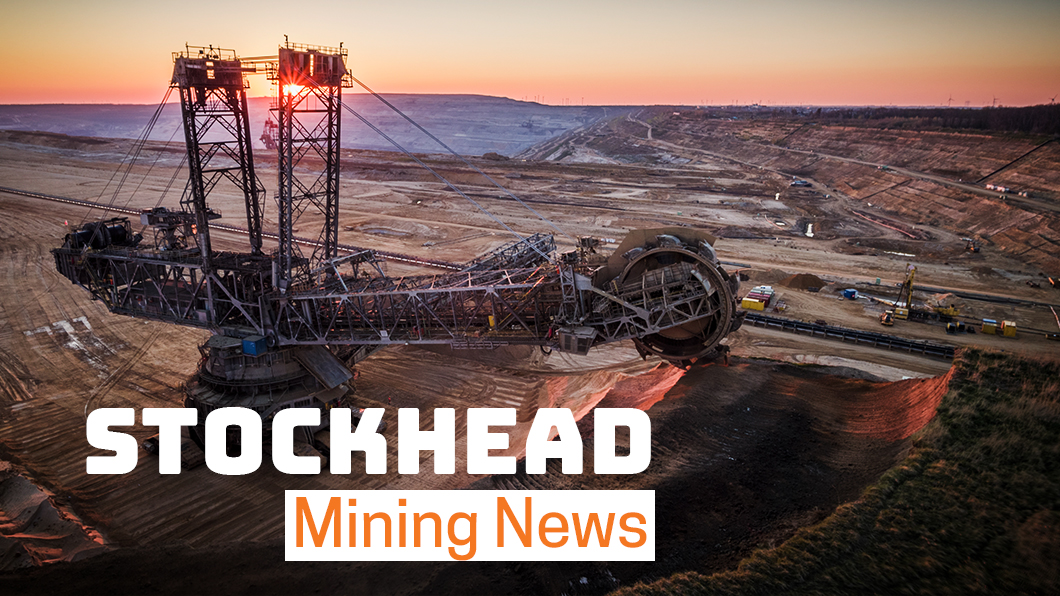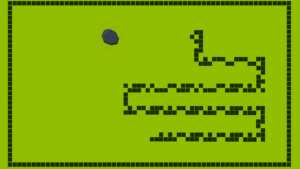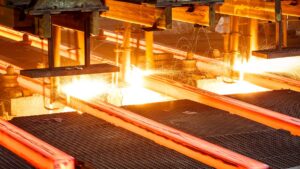Bulk Buys: Bowen Coal brings on new coal supply as market turns bullish again

Pic: Schroptschop / E+ via Getty Images
- Coking coal prices rise sharply on Monday to over US$450/t as bids return
- Bowen Coal restarts mining at Bluff PCI Mine, plans to produce 1-1.2Mtpa
- Westpac lifts iron ore forecast, but senior economist says both upside and downside for prices
Metallurgical coal prices have showed reluctant signs of returning to some form of normality in recent weeks, dropping off the crazy levels in excess of US$650/t they surged to in March during the early days of the Russian invasion of Ukraine.
The logic for their charge was clearly evident.
Coking coal supplies were already tight from a series of market ructions including an inexplicable number of disruptions across the seaborne market last year and the redirection of Australian coal flows out of the Chinese market via an unofficial ban enacted in 2020.
Add to that heavy rainfall and Covid absenteeism across Australia’s east coast, the largest supplier globally of the traded coking coal industry, and then the threat of Russian supply being pulled from the market and conditions were ripe for a supply led surge.
But those heady prices tipped below a still high US$400/t as buyers lost interest in premium cargos.
That seems to have turned around, with met coal prices surging US$42.86 in a day on Monday according to Fastmarkets MB, with premium hard coking coal FOB Dalrymple Bay Coal Terminal paying US$451.15/t.
Thermal coal prices are heading back into bull market territory as well, with Newcastle 6000kcal energy coal rising from under US$260/t to US$292/t yesterday on the back of the European Commission’s call to officially bar imports of Russian product, which would cut off the main international supplier of coal into Europe.
Macquarie says it will be down to South Africa and Colombia to pick up the slack.
“API-2 coal prices rallied on the news, but we don’t expect the ban to lead to a sustained increase in European thermal coal prices, as trade reshuffling take place and other producers (Colombia and South Africa in particular) step in to fill the gap,” they said in a note this week.
“Colombian and South African coal have a higher delivered cost into Europe (vs Russian coal), but given prices are trading so far out of the cost curve, we doubt this will lead to a structurally higher API-2 price.”
PCI prices remain super high
But prices seem to be likely to remain extremely solid for the foreseeable future.
One area that is likely to be seen more than others is in the pulverised coal for injection market, given much of the coal Russia supplies is traded in that form to European steelmakers.
Normally sold at a significant discount to the benchmark PHCC price, PCI has caught a bid in recent weeks, trading as high as US$644/t at the coal market’s zenith last month.
They’re well down on that mark as the coal market has softened in the past week, but PCI coal is still trading at levels that would make a coal baron smile like a Cheshire Cat.
What a time for Bowen Coal (ASX:BCB) to be bringing a new mine to market trading that product.
The Nick Jorss-chaired company announced Monday that mining of the open cut mine had begun under a three-year contract with HSE Mining. The 1-1.2Mtpa mine comes online as Asian and European customers are crying out for coking coal with steelmaking expanding outside China, the first tyne of a four pronged 5Mtpa portfolio that will also include the Broadmeadow East, Burton and Isaac River mines.
Bluff is an ultra-low volatile PCI coal, with a low ash, high energy and high coke replacement ratio. Bowen says its marketing JV with M Resources has secured sales contracts with blue chip Asian steel customers for shipments starting in late May.
Rising crude oil prices and labour costs have added 10-15% to its inputs, but those will be shielded and then some by PCI prices trading up to four times higher than levels of 12 months ago at over US$365/t as of April 7.
“The commencement of coal mining at Bluff is a monumental move for the Company as we take the major step from explorer to becoming Australia’s next multi-mine coal producer,” managing director and CEO Gerhard Redenlinghuys said.
$450 million capped Bowen is one of the fastest climbing coal firms on the ASX, attributable to its newly minted status as a miner and the surging price of its underlying commodity. Its shares are up 383% since April last year and almost 71% year to date alone.
ASX coal stocks
Scroll or swipe to reveal table. Click headings to sort.
| CODE | COMPANY | PRICE | 1 WEEK RETURN % | 1 MONTH RETURN % | 6 MONTH RETURN % | 1 YEAR RETURN % | MARKET CAP |
|---|---|---|---|---|---|---|---|
| NAE | New Age Exploration | 0.013 | -13% | 18% | 18% | -24% | $ 21,538,483.65 |
| CKA | Cokal Ltd | 0.175 | -5% | 13% | 0% | 165% | $ 159,621,326.60 |
| NCZ | New Century Resource | 2.11 | -2% | 9% | -9% | -22% | $ 288,179,568.60 |
| BCB | Bowen Coal Limited | 0.29 | -3% | 4% | 53% | 350% | $ 471,269,735.12 |
| LNY | Laneway Res Ltd | 0.006 | 0% | 4% | 25% | 4% | $ 28,012,259.62 |
| GRX | Greenx Metals Ltd | 0.2 | 5% | 0% | -32% | -16% | $ 50,724,092.80 |
| AKM | Aspire Mining Ltd | 0.088 | 2% | 2% | -12% | -8% | $ 46,702,602.62 |
| PAK | Pacific American Hld | 0.016 | 0% | 7% | -11% | -14% | $ 8,123,915.83 |
| AHQ | Allegiance Coal Ltd | 0.485 | 1% | -11% | -25% | -8% | $ 192,960,969.30 |
| YAL | Yancoal Aust Ltd | 4.81 | 2% | -6% | 17% | 114% | $ 6,443,744,452.56 |
| NHC | New Hope Corporation | 3.71 | 7% | 30% | 39% | 172% | $ 3,187,927,624.06 |
| TIG | Tigers Realm Coal | 0.017 | 0% | 70% | -43% | 113% | $ 196,000,535.52 |
| SMR | Stanmore Resources | 1.755 | 10% | 13% | 70% | 139% | $ 1,563,897,246.03 |
| WHC | Whitehaven Coal | 4.4 | 5% | 9% | 28% | 143% | $ 4,561,278,197.73 |
| BRL | Bathurst Res Ltd. | 1.03 | 3% | 1% | 15% | 158% | $ 172,661,139.23 |
| CRN | Coronado Global Res | 2.1 | 4% | 4% | 30% | 144% | $ 3,587,610,982.20 |
| JAL | Jameson Resources | 0.086 | 5% | 8% | 1% | -13% | $ 29,945,484.83 |
| TER | Terracom Ltd | 0.55 | 18% | 28% | 233% | 498% | $ 414,484,196.50 |
| ATU | Atrum Coal Ltd | 0.015 | 15% | 7% | -69% | -77% | $ 9,679,156.70 |
| MCM | Mc Mining Ltd | 0.115 | 0% | 39% | -8% | 0% | $ 20,242,263.72 |
Higher iron ore prices for 2022 as blast furnace utilisation rises
The war in Ukraine has had some significant and unforeseen circumstances. Many of these deliver upside for iron ore prices.
One of those is the well documented rise in steel prices with Russian and Ukrainian production off the table, which will prompt higher prices for Chinese producers and improve the outlook for iron ore.
These have been tempered by the continuing Covid lockdown in Shanghai, China’s largest steel trading hub.
But expectations are China will boost economic growth in the second half of the year, delivering strong conditions for steel production.
Westpac senior economist Justin Smirk said the war in Europe would also restrict supplies of scrap steel into China.
That’s bullish for iron ore, because it means Chinese mills will have to replace electric arc furnace production, which largely consumes scrap steel, with blast furnace production fed by iron ore.
“China remains the key driver of iron ore prices but that does not mean we can ignore the events in Europe,” Smirk said.
“Russia and Ukraine account for around 4% of the global iron ore export market but they have a much larger share in the iron ore pellet market (about 23% of global exports) most of which goes to Europe. Russia and Ukraine are also significant steel producers with exports in 2021 of 28Mt and 14Mt respectively.
“The unfolding disruption to these trade flows (which includes an EU ban on Russian steel products) has led to higher steel prices in Europe which should be supportive of iron ore prices.
“Further, the significantly higher energy costs resulting from the crisis in Ukraine, and the loss of scrap steel out of Russia will reduce EAF competitiveness and favour blast furnace production and thus iron ore consumption.
“In China both the utilisation rates for both BF and EAF furnaces have been lifted in this year and are currently running above their four-year average rates, something that has not been seen in a meaningful or sustainable way since the first half of 2021.”
Westpac has topped up its iron ore forecasts for 2022 from US$100/t to US$115/t. Benchmark 62% fines are currently fetching around US$150/t, with Singapore Futures for May up 2.35% yesterday to US$155.35/t.
Iron ore upside on a tightrope
There remains cases for both upside and downside to iron ore prices, Smirk notes.
On the downside are high input costs from iron ore, but also coal and scrap steel have crimped margins for Chinese steel producers.
Global steel production growth outside China has also waned from the pandemic-impacted 42% year on year growth in April last year to just 2% in December. With China included, global output growth peaked at 24% in April last year, with China slowing to 23% YoY decline in October and 7% drop in December.
Meanwhile Covid outbreaks in Shenzhen and Shanghai have weighed on demand.
“Despite the recent run of Chinese data that materially surprised to the upside, market participants cannot look past the risks to China’s outlook, in particular the succession of Omicron outbreaks seen across the country, most notably in the key economic centres of Shenzhen and Shanghai,” he said.
In the case for upside, China’s economy has performed better than expected in the early part of 2022.
“But China’s economy outperformed in January and February with even housing, the weakest aspect of the economy over the past year, showing some resilience of late with the building of a base for investment and prices evident. There has also been the incremental government support for the housing sector,” Smirk said.
There are also questions about whether China can resolve high iron ore prices with measures to increase its self-sufficiency and how constrained supply is relative to demand from Asia.
“For now, seaborne ore prices remain well supported by constrained supply. Chinese ore imports have largely been tracking sideways since peaking in mid 2020 though it has been a bit of a volatile ride,” Smirk said.
“And the recovery in Chinese ore production appears to be running out of steam as production has moderated since a modest peak in May last year. This tightness is further illustrated by the 62%fe trading close to Chinese ore prices; normally it trades at a discount with the discount narrowing the tighter supply conditions become for seaborne ore.”
Brazilian and Australian exports to China improved over the past week by 2.5% according to MySteel. But they have been generally poor so far this year after heavy rain dampened exports out of Brazil, with Australia’s wet season-affected Pilbara also typically weak in the March quarter.
According to figures from the Pilbara Ports Authority, Australian iron ore miners shipped 46.5Mt from Port Hedland in March, 39.5Mt of that to China (up 3.6% year on year).
However exports from the Port of Dampier, which largely handles cargoes from Rio Tinto (ASX:RIO), were down 15.9% year on year in March to 9.75Mt.
ASX iron ore stocks
Scroll or swipe to reveal table. Click headings to sort.
| CODE | COMPANY | PRICE | 1 WEEK RETURN % | 1 MONTH RETURN % | 6 MONTH RETURN % | 1 YEAR RETURN % | MARKET CAP |
|---|---|---|---|---|---|---|---|
| ACS | Accent Resources NL | 0.06 | 0% | 7% | 9% | -8% | $ 27,961,636.98 |
| ADY | Admiralty Resources. | 0.017 | 13% | 0% | 13% | -26% | $ 22,160,845.60 |
| AKO | Akora Resources | 0.315 | -9% | -16% | 66% | -28% | $ 21,028,636.31 |
| BCK | Brockman Mining Ltd | 0.043 | -7% | -4% | 0% | 43% | $ 399,006,981.63 |
| BHP | BHP Group Limited | 51.72 | -1% | 8% | 36% | 11% | $ 261,620,862,459.20 |
| CIA | Champion Iron Ltd | 7.58 | -6% | 11% | 59% | 24% | $ 3,915,918,020.08 |
| CZR | CZR Resources Ltd | 0.0085 | 21% | 21% | -6% | -23% | $ 27,890,586.22 |
| DRE | Dreadnought Resources Ltd | 0.044 | -10% | 10% | 13% | 120% | $ 122,063,392.69 |
| EFE | Eastern Resources | 0.049 | -22% | 4% | 32% | 377% | $ 51,464,842.31 |
| CUF | Cufe Ltd | 0.032 | -6% | -9% | -22% | -24% | $ 31,634,208.05 |
| FEX | Fenix Resources Ltd | 0.295 | 5% | 18% | 26% | 20% | $ 149,702,036.80 |
| FMG | Fortescue Metals Grp | 21.17 | -2% | 16% | 41% | 1% | $ 65,243,266,612.42 |
| FMS | Flinders Mines Ltd | 0.5 | 0% | 0% | -37% | -62% | $ 84,424,288.50 |
| GEN | Genmin | 0.18 | -10% | -14% | -8% | -27% | $ 49,400,373.75 |
| GRR | Grange Resources. | 1.315 | 13% | 32% | 153% | 189% | $ 1,481,393,533.44 |
| GWR | GWR Group Ltd | 0.155 | -6% | -3% | 7% | -46% | $ 49,788,581.53 |
| HAV | Havilah Resources | 0.19 | 3% | 3% | 0% | -5% | $ 60,412,317.62 |
| HAW | Hawthorn Resources | 0.11 | 18% | 29% | 86% | 104% | $ 38,354,295.50 |
| HIO | Hawsons Iron Ltd | 0.445 | 35% | 123% | 449% | 1124% | $ 296,746,974.25 |
| IRD | Iron Road Ltd | 0.195 | 3% | 8% | -17% | -34% | $ 155,594,436.27 |
| JNO | Juno | 0.125 | 25% | 9% | -7% | 0% | $ 17,635,540.13 |
| LCY | Legacy Iron Ore | 0.027 | 35% | 42% | 93% | 93% | $ 179,391,133.57 |
| MAG | Magmatic Resrce Ltd | 0.084 | 0% | -13% | -16% | -35% | $ 21,122,404.23 |
| MDX | Mindax Limited | 0.059 | 0% | 0% | 18% | 1867% | $ 112,672,163.12 |
| MGT | Magnetite Mines | 0.032 | -3% | 7% | 28% | -29% | $ 101,111,900.19 |
| MGU | Magnum Mining & Exp | 0.087 | 16% | 12% | 34% | -40% | $ 42,752,333.42 |
| MGX | Mount Gibson Iron | 0.63 | 2% | 21% | 34% | -25% | $ 780,816,381.29 |
| MIN | Mineral Resources. | 59.16 | 5% | 27% | 32% | 44% | $ 11,196,929,010.19 |
| MIO | Macarthur Minerals | 0.42 | -21% | 2% | 2% | -18% | $ 61,426,464.96 |
| PFE | Panteraminerals | 0.165 | -8% | -3% | -46% | 0% | $ 8,585,000.00 |
| PLG | Pearlgullironlimited | 0.079 | 13% | -7% | -44% | 0% | $ 4,556,891.56 |
| RHI | Red Hill Iron | 3.6 | 1% | -2% | 6% | 870% | $ 223,398,521.50 |
| RIO | Rio Tinto Limited | 118.09 | -2% | 6% | 15% | 2% | $ 43,617,905,145.00 |
| RLC | Reedy Lagoon Corp. | 0.032 | -16% | 23% | 45% | 33% | $ 18,095,788.59 |
| SHH | Shree Minerals Ltd | 0.014 | -13% | -22% | 56% | -7% | $ 18,333,553.38 |
| SRK | Strike Resources | 0.13 | -19% | 8% | 4% | -33% | $ 35,100,000.00 |
| SRN | Surefire Rescs NL | 0.016 | -16% | 7% | 14% | -36% | $ 18,079,086.54 |
| TI1 | Tombador Iron | 0.038 | -7% | -7% | -16% | -48% | $ 41,364,162.51 |
| TLM | Talisman Mining | 0.17 | 0% | 3% | 17% | 70% | $ 31,915,714.49 |
| VMS | Venture Minerals | 0.054 | -24% | 35% | 8% | -13% | $ 100,197,455.52 |
| EQN | Equinoxresources | 0.2 | 0% | 8% | 0% | 0% | $ 9,225,000.21 |
Fenix returns to the black in positive sign for iron ore reporting
Junior iron ore miner Fenix Resources (ASX:FEX) kicked off iron ore reporting season for the March quarter with a bang.
In a positive sign for the big miners the Iron Ridge owner reported strong margins from the first three months of the year after seeing lower iron ore prices tank its December performance.
Despite its small stature, Fenix’s results will be a bit of a dress rehearsal for investors in the big iron ore miners. And they didn’t disappoint this time around.
Stronger iron ore prices averaging around US$141/t led to an average price of US$132.83/t FOB on the 295,000t exported from the Port of Geraldton from Iron Ridge against cash costs of $81.72/wmt.
That is equivalent to US$159.49/t CFR, positively impacted by some price adjustments from the previous quarter and the higher grade lump content of Fenix’s ore (63.9% Fe) compared to the benchmark 62% fines standard.
Fenix generated $31m in free cash in the quarter, boosting its bank balance from $54.9m to $85.6m as of March 31.
“A strong recovery in the iron ore price and a decrease in shipping costs has seen us generate some $31m of cash for the quarter underpinned by a solid production performance. Fenix also benefited from some positive pricing adjustments from the December 2021 quarter, which validated our decision to operate at close to full capacity, despite the price weakness during that period,” Fenix MD Rob Brierley said.
“The current quarter has started positively with strong iron ore prices, and a shipment completed loading on 2 April 2022.
“We finished the quarter with a strong balance sheet with net cash of A$85.6m, equal to 16.6c a share, and expect to build on this solid position during the current quarter.”
Fenix Resources (ASX:FEX) share price today:
Related Topics
UNLOCK INSIGHTS
Discover the untold stories of emerging ASX stocks.
Daily news and expert analysis, it's free to subscribe.
By proceeding, you confirm you understand that we handle personal information in accordance with our Privacy Policy.








